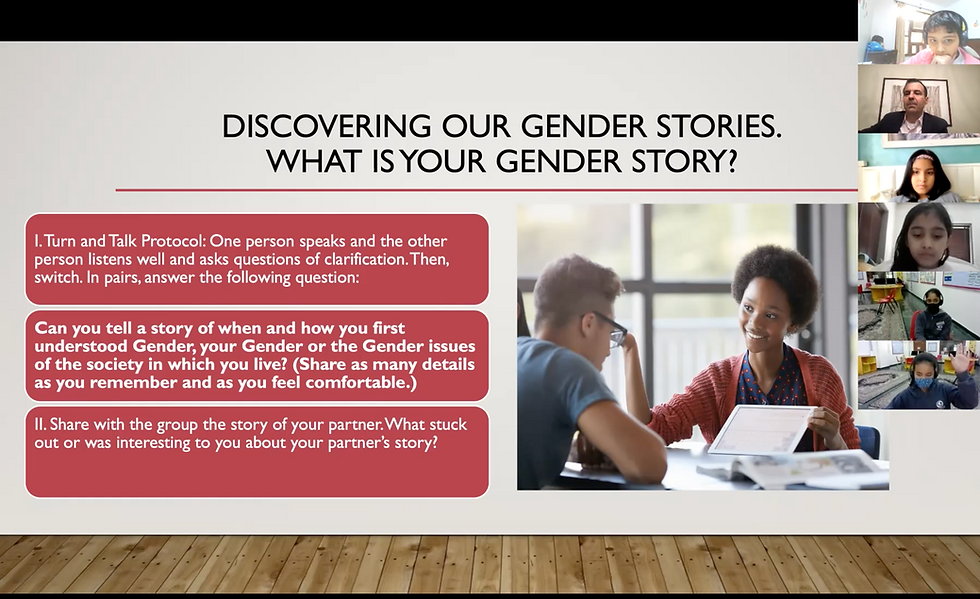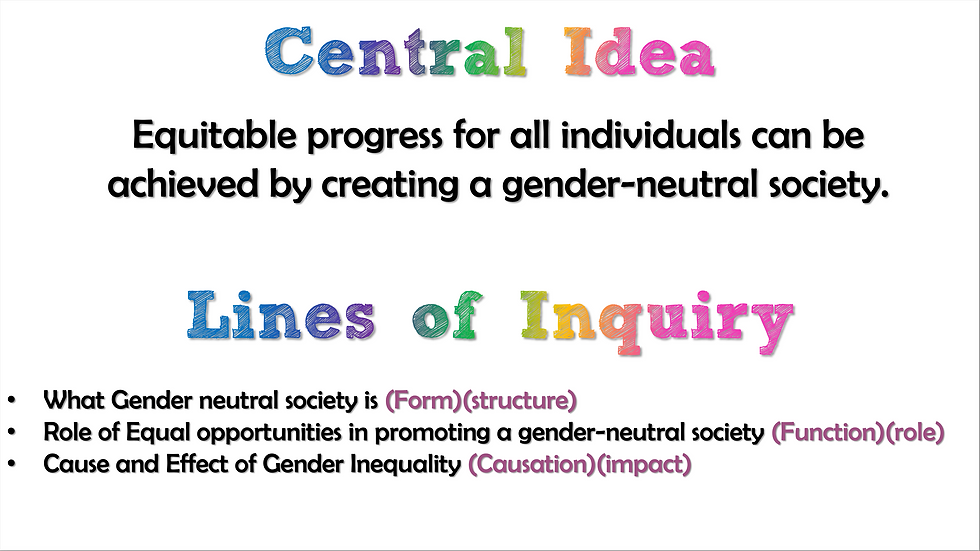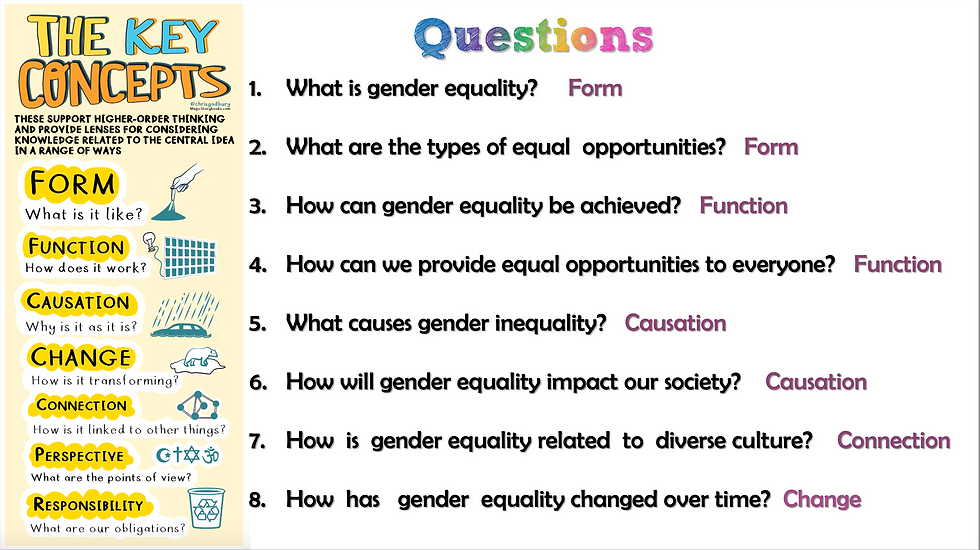An Invitation to Engage: The Pathways World School Gurgaon India, Gender Sustainability (Part 2 of3)
- Educating Gender
- May 4, 2022
- 4 min read

Anuradha and I went back and forth a number of times over email as I anxiously worked to try and get it right. She is the faculty member in charge of the Gender and Sustainability section at the Pathways World School, Gurgaon, and I also consider her my teacher as we attempted to navigate the work ahead of us with the students in the Sentience PYP Exhibition. The question we had, which all teachers will recognize, is where to begin?
Anuradha is ma’am and I am sir, she told me. The students’ formalities did not surprise me. Firstly, PWS is a boarding school, and second, a school within a still very traditional culture with many years of British colonial rule embedded into many of their systems, including education. The one thing I have learned is, even when something might make you feel uncomfortable with certain assumptions, particularly around language, you just have to go with the flow. Respect the teachers, respect the school, respect the mores and cultural underpinnings you have been invited into.
The question we had, which all teachers will recognize, is where to begin?
Speaking of language and embedded meaning, this was really where I believed I could be most effective with the students from the beginning of our work together. Let’s get clear and coherent in terms of understanding something as vast and complex as gender.
One of the terms that was reflected in the materials shared with me by Anuradha and which kept getting repeated was the phrase “gender neutrality”. Here is an example:

This both fascinated and confused me at the same time. As mentioned in the first part of this three part post, gender equality was also used but neutrality was a tricky term for me. Equality and neutrality are not interchangeable. The example I used with the students was a car. When a car is put into neutral gear, it is static, it cannot go backward, but it cannot go forward either. Even pushing the gas pedal has no impact. My issue (and fear) was that students would see gender inside of a fixed framework, instead of understanding that our conceptions of gender are shifting constantly. Understanding how someone else perceives their relationship to gender can and may very well evolve over time. It certainly has for me personally.
The one thing I have learned is, even when something might make you feel uncomfortable with certain assumptions, particularly around language, you just have to go with the flow. Respect the teachers, respect the school, respect the mores and cultural underpinnings you have been invited into.
For the students at Pathways, the “neutrality” framework was laden with the immediate political and social needs of issues such as physical safety for women (honor killings and forced marriages came up immediately) as well as equal pay, equal access to educational opportunities…etc. My concern was that the students needed to see this in a broader context to understand the long term ramifications of social change around issues of gender.
So, I decided to begin where I always do. Teachers and educators know that they need to lean in to their strengths and, for me, that means having students construct personal narratives of what gender means to them. What are their gender stories? What do they sound like? Where do they think that these feelings and thoughts come from? Diversity of expression is a powerful tool to open up the door to knowledge dissonance and understanding.
Here was the basic subset of the lesson plan* which helped students construct gender narratives.
Discovering our Gender Stories
I. Turn and Talk Protocol:
In pairs, answer the following question. One person speaks and the other
person listens well and asks questions of clarification. Then, switch.
Can you tell a story of when and how you first understood Gender, your
Gender or the Gender issues of the society in which you live? (Share
as many details that you remember and as you feel comfortable.)
II. Share with the group the story of your partner. What stuck out or was
interesting to you about your partner’s story?
The results were fascinating and the students were inspiring in terms of their passion and excitement. One student, Sahira, spoke about going to the mall with friends and realizing how the stores were organized to draw girls and boys into different shopping experiences based on pre-considered and engineered gender triggers; the children were being told what it meant to be a boy or girl by what they would and should be interested in buying. (A real Marxist in the making!)
Another student, Sahana, told of an experience going to a friend’s home to play and overhearing a father telling her friend’s older brother that everything that the family was doing was to guarantee his success for the sake of the family. Sahana’s friend was embarrassed by the conversation, knowing that she was now being categorized as a secondary concern in the family structure. When Sahana came home and told her parents about the conversation, they did not allow her to return to that friend’s home. (Wow!)
The students were excited and responsive. They saw the multiple experiences and lenses that their classmates were using to define gender on a personal level. The stories led us to the work of clarifying terms and distinctions between concepts like equality, equity, neutrality. How could we expand our understanding of the work that needed to be done regarding gender by providing the students with multiple perspectives?
*Here is a link to the entire lesson plan from Session I. Also, below are the categories of learning attainment and inquiry coming from the PYP protocols shared with me for the student projects.

.


Comentarios